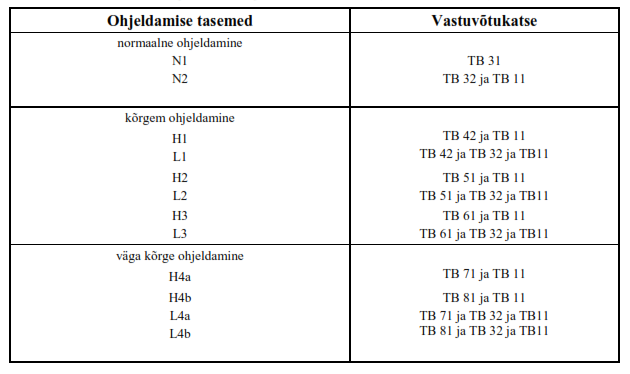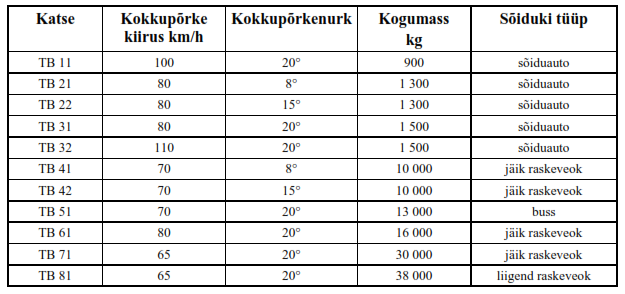
Inten OÜ
- Reg. Code: 11309373
- VAT Number: EE101093178
- Kanama Road 5, Saku Parish
76405 Harju County Estonia - info@inten.ee
- +3726335230
- +3725012287
- www.inten.ee
The level of containment is characterized by the degree of resistance of the collision barrier depending on the total weight of the vehicle, the angle of impact and the speed of impact according to the collision test in accordance with EN 1317 (see table).

Table ' EN 1317 classification of containment levels '
Containment levels are determined by the tests that must be tolerated by the above limits. Each new system must be tested at least twice – one time with a light vehicle, to determine the impact and influence of the car driver and the second time with a heavier vehicle in order to determine the maximum impact energy that the test limiting system could absorb. Safety levels are classified according to the impact energy that has been tested on the system.
In order to obtain the CE marking and the authorisation for marketing in the European Union, collision tests must be carried out on the perimeter system. The test-limitation system shall conform to the following parameters:

Table ' Vehicle collision test Specifications (EVS-EN 1317-2) '
[/cws-widget] [/col] [/cws-row]